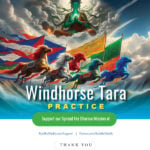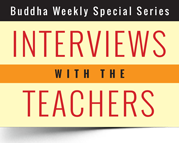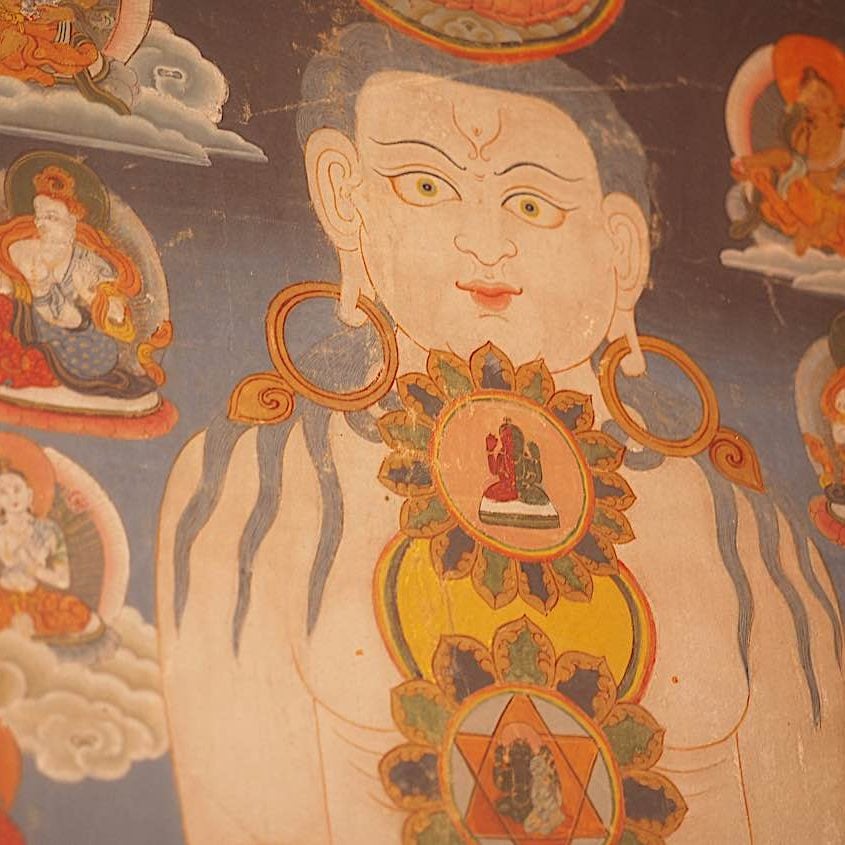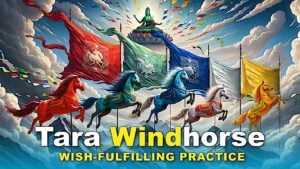Part 3: Zasep Tulku Rinpoche discusses how to find a teacher; why its important to meditate on death; how to start with Deity Yoga; how wrathful Deities can be misunderstood; and the role of internet in Dharma teachings.
Buddha Weekly continues its special series “Interviews with the Teachers” with part 3 of an extensive hours-long interview with the most Venerable Zasep Tulku Rinpoche. Rinpoche is spiritual director of many temples, meditation centres and retreat centres in Australia, the United States and Canada and teaches also in Mexico and Mongolia. Future scheduled teachings from Zasep Rinpoche at end of this feature. (Feature photo credit: Jerry O’Donnell)
PART 3 OF A 3-PART FEATURE INTERVIEW WITH VENERABLE ZASEP TULKU RINPOCHE.
Interview by Lee Kane
Buddha Weekly: Can you share any suggestions for students trying to find a qualified teacher?
Zasep Rinpoche: That’s a difficult question. You have to decide what you want in a teacher. If you are new to Buddhism, and looking at a particular teacher, you should find out their background. You should go to their talks and teachings. Where did he or she study? How many years retreats has the teacher completed? What kind of study he or she did.
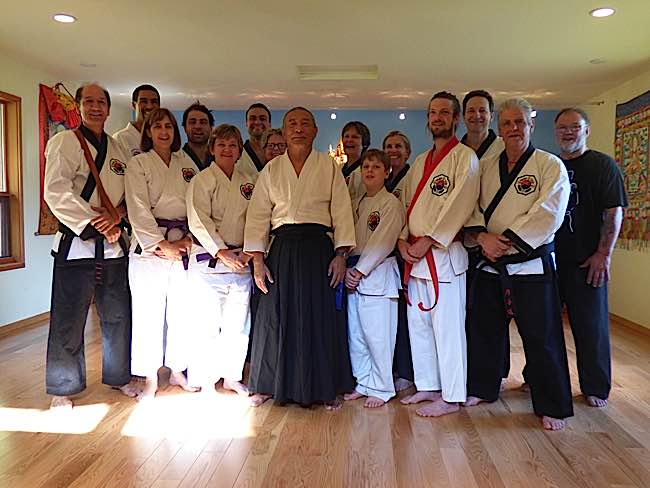
Then, the next thing is, okay, you’ve found out the teacher has good qualities, but then you need to look at his or her personality. Some teachers are very, very strict, and very demanding, some teachers even seem a little big harsh. They may be good teachers, but maybe a little too harsh for you?
Some teachers have done lots of studying, lots of meditation, but they’re not really willing to spend a lot of time with you. They might be too famous, or too busy, or they come and go. Some High Lamas show up every ten years, then they’re gone. How can you be a student? If you attend a teaching with a High Lama, but you never even get close to him, you can’t really say “He’s my Guru.” You don’t have a relationship, right? Like a Guru from long distance.
You have to go around, listen to teachings, listen to different teachers, then decide.

Buddha Weekly: How does someone who’s interested, get started in Deity Yoga?
Zasep Rinpoche: To get started, if they’re interested, they should look at taking initiation in a lower tantra. Not higher tantra. Green Tara, Medicine Buddha, Manjushri. Then, after initiation, do the sadhana practice. Or, if he or she is not ready to take initiation, they can recite the mantra and do a little bit of visualization of the deity in front of you. You can imagine light emanating from the deity to you. Purifying light descending and dissolving into you. Together with the mantra, that would be a good way to start.

Buddha Weekly: Why do you think Deity Yoga is growing in popularity in North America and Europe?
Zasep Rinpoche: When you do Deity Yoga, right away you feel calm and peaceful. People who take up Deity Yoga already understand the four noble truths. They’ve already seen suffering and the cause of suffering. Deity Yoga is very helpful, and it’s good for busy people. You asked before about practice for busy people. With Deity Yoga, you can do your practice anywhere. You can say mantras in the car. When you are stuck in a traffic jam for one hour you can say mantras. It also keeps you calm, so you don’t get frustrated in traffic.

Buddha Weekly: When do you find time to do your own practice?
Zasep Rinpoche: I do my mantras when I’m on a plane. I do my mantras when I’m on the subway. I travel a lot. I sit on the plane, have a cup of tea, then do my mantras. I do my practice first, then maybe try to get some sleep.
Buddha Weekly: What’s the best way to explain wrathful deities? Sometimes they are misunderstood.
Zasep Rinpoche: Yes, that’s a good question. We have wrathful deities like Yamantaka, Hayagriva, Kalarupa, and so on. When you do wrathful deity practice, you visualize yourself as the wrathful deity. It gives you energy. You feel like “I am strong” and “I am protected.” But before you do wrathful practice, you start with lower tantras, the peaceful deities. And, every time you do any of these practices, first you meditate on emptiness.
You start with the Sanskrit mantra, Om Svabhava Shuddo and so on, “every thing becomes voidness.” Then you visualize your consciousness arising as a seed syllable, then the deity. So, when you do these practices, this “I” — ordinary man or woman ego — is already gone. You transform the I, or ego, by meditating on emptiness. When there is no self, who is there to be angry? Who is there to be terrified?

Of course, from a Western cultural background, wrathful deities can be misunderstood as demonic because of their appearance.
We have a praise to Yamantaka, that says, “Out of your compassion, you show your wrathful face.” When you pray to wrathful deities, you feel protected. You feel, He is my protector. He can protect me from obstructions and negative forces. He or She is like your warrior. It’s like martial arts self defense.
For example, I go to Mongolia every year. Many Mongolians have names like Yamantaka or Hayagriva. In the Mongolian cultural background, they like fierce names. They feel protected.

Buddha Weekly: Can you speak a little about Deity Yoga practice in Tantra?
Zasep Rinpoche: Don’t be a spiritual materialist. You need a good base in Sutra and Lamrim practice. Then, if you want to do Deity Yoga you don’t try to jump. Don’t rush. Practice Lower Tantra first.
See, the thing is, Lower Tantra doesn’t mean they are “lower.” In other words the lower tantra is not inferior to higher Tantra. They are the same deities. For example, Manjushri is a Kriya Tantra, a lower Tantra deity. But Manjushri is the same as Yamantaka. No difference. Yamantaka is Higher Tantra.
Tara is the Lower Tantra practice. But you have a Higher Tantra practice called Chittimani Tara. Then, we also have Vajrayogini, which is also an emanation of Tara.
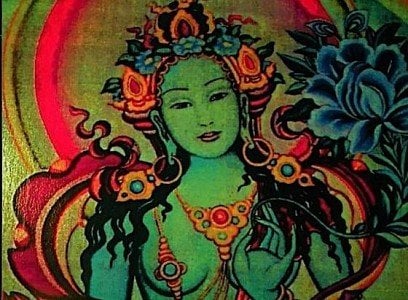
Lower Tantra is designed for the beginners. It’s like the beginner’s “form” when you study martial arts. You need to master that first, before progressing.
Buddha Weekly: You said Vajrayogini is an emanation of Tara. Can you explain what you mean?
Zasep Rinpoche: Tara is the Mother of all the Buddhas. You could say that almost all the female deities are emanations of Tara. Not just Holy Vajrayogini, but Kurukulla, Black Dakini, all of them.

Buddha Weekly: How do students know when they’re ready for a Higher Tantra?
Zasep Rinpoche: First, you have to understand, really understand, what is the value of practicing Higher Tantra. They have to think about their time. How much time to you have every day? Also, you need to have this strong internal connection. You feel this strong connection to, say, Yamantaka. You feel an attraction. You feel an urge. It’s hard to put into words, but it’s sort of like “chemistry.” Just like people are attracted to certain people, there’s a chemistry. You feel something unusual. It’s like when you find your “soul mate.”
In Tantra, we call this “Yidam” which means “heart bond deity.” You have to have the heart bond connection.
Then, at the last, you go to the Guru. And ask your Guru. That’s the point of having a Guru. If the Guru says, no, then you don’t do it. If Guru says, “go ahead”, then you take it. So, the Guru can be very helpful! (laughs) Your spiritual friend.

Buddha Weekly: How important is meditating on death?
Zasep Rinpoche: Generally, meditating on death and dying is very important. In Lamrim, it says, “Meditating on death and dying helps motivate Dharma practice.” Life is too short. Death can happen any time, you don’t know. As we get older, we know we don’t have much time left. I’ve got maybe ten years, fifteen years, maybe twenty years. So, the time goes fast, and death’s going to happen sooner or later.
So, meditating on death is very helpful to motivate Dharma practice.
Also, meditating on death and dying is helpful for other people. For instance, you know someone is dying, like family members — or some people work around people who are dying, like a palliative nurse or doctor — so it’s good to know more about how to be helpful in these times.
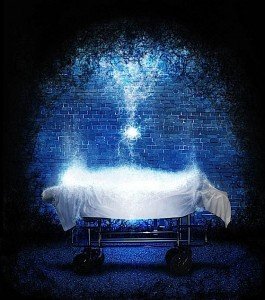
Buddha Weekly: Is Powa practice helpful for the dying (Transferring the Consciousness)?
Zasep Rinpoche: Powa is a Tibetan word, it means “transferring the consciousness.” I usually say, not everybody should practice this. I don’t want to give people the wrong idea. We do Powa practice as a training. When you know you have some illness or you are dying, if you think death come soon, then it’s a good time to practice. But Powa requires instructions. In traditional Powa practice you have visualize chakras and channels and so on.

But, you can do a non-traditional Powa—mild Powa, a simple kind of Powa—for other people. Sort of guiding. I call it Powa for the West. For instance if you’re a family member, or in palliative care, and you talk to the patient, you might say as they are dying: “You know you are dying now. Let it go. You should go peacefully. As you go, imagine you are going to the Pure Land, or going into the Light, or into Eternal Bliss or Nirvana.” You could call this kind of help, Powa for the West. It’s not traditional Powa.
I’ll tell you a story of a Zen Master. He was dying. And he told his attendant “Bring me my favorite cake!” Rice cake. While he was munching the rice cake, his consciousness slipped away. He slipped away while enjoying his rice cake. In a way, this was a kind of Powa. He enjoyed his rice cake peacefully, and no sign of struggling, fear, worry, just passing the consciousness peacefully, happily.
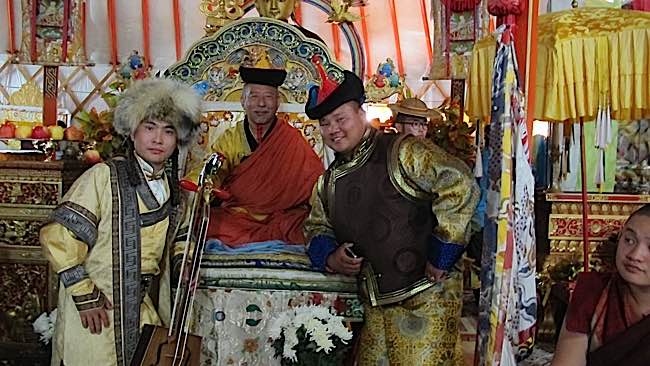
Buddha Weekly: How has the internet changed, helped or hindered Dharma practice?
Zasep Rinpoche: Generally, it has a positive effect. It’s beneficial to have easy access to teachings on YouTube, and you can download material, pictures and sadhanas and you can find so much information. It’s generally useful and helpful.
It all depends on the individual. Internet can be very impersonal, you know? It can also be addictive. Even some monks, now, instead of holding malas and doing mantras, they have their phones in hand, sending messages, text messages. In some ways it’s nice. The monks even use chat for spiritual debating. But in some ways it’s really bad. Instead of doing mantras and practices, they spend time online.
Also, people feel like, “Oh, I don’t have to get in the car and drive forty-five minutes to go to the Dharma Centre and meditate, I can just watch some teachings from a Lama on YouTube.” But the problem is, there’s no personal connection. Some people like that, especially if people are very shy.

Buddha Weekly: Can you receive initiations online?
Zasep Rinpoche: No, I disagree with that. I mean there is a question about giving “lung”, transmission of mantra, because all you have to do is hear the voice, right? That’s okay. But, giving initiation, you have to be in front of the person. You have to go and prostrate, or drink the saffron water. Lama has to touch the person’s head. You have to be there. You have to be in front of the mandala. Online, you can’t really do that. You’re really diluting and making it very impersonal.
Buddha Weekly: You’re performing a gay marriage today?
Zasep Rinpoche: Yes, a very lovely couple. I officiate many weddings, and often gay marriages. I’m licensed in Ontario and BC for marriages. I would like every one to know I celebrate both gay and non gay marriages.
[Editors note: At this point, Rinpoche had to prepare for the wedding, and the interview ended.]
Zasep Rinpoche: Thank you. That was good.
NOTES
[1] What the Buddha Taught: Revised and Expanded Edition witdh Texts from Suttas and Dhammapada, Walpola Rahula, Grove Press, ISBN-10: 0802130313 ISBN-13: 978-0802130310
[2] Treasury of Dharma: Tibetan Buddhist Meditation Course by Geshe Rabten, Tharpa Publications ISBN-10: 0948006048, ISBN-13: 978-0948006043
[3] Buddhism for Busy People, David Michie, ISBN-10: 1559392983
ISBN-13: 978-1559392983, Snow Lion 2009.
[4] Psychology of Buddhist Tantra, Rob Preece, Snow Lion 2006, ISBN-10: 1559392630, ISBN-13: 978-1559392631
[5] Lama Chopa, the Guru Puja, Rob Preece, introduction by Zasep Tulku Rinpoche, The Sumeru Press Inc. (Sept. 1 2012),
[5] Guidelines for Students, Zasep Tulku Rinpoche
More articles by this author
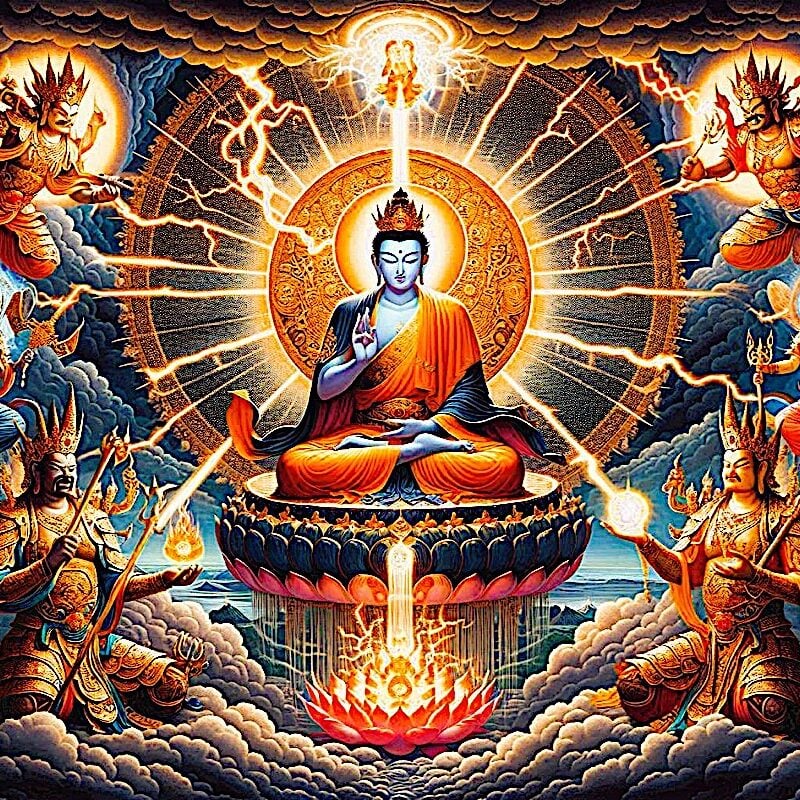
Protection from all Harm, Natural Disaster, Weather, Spirits, Evil, Ghosts, Demons, Obstacles: Golden Light Sutra: Chapter 14

Guru Rinpoche is ready to answer and grant wishes: “Repeat this prayer continuously” for the granting of wishes
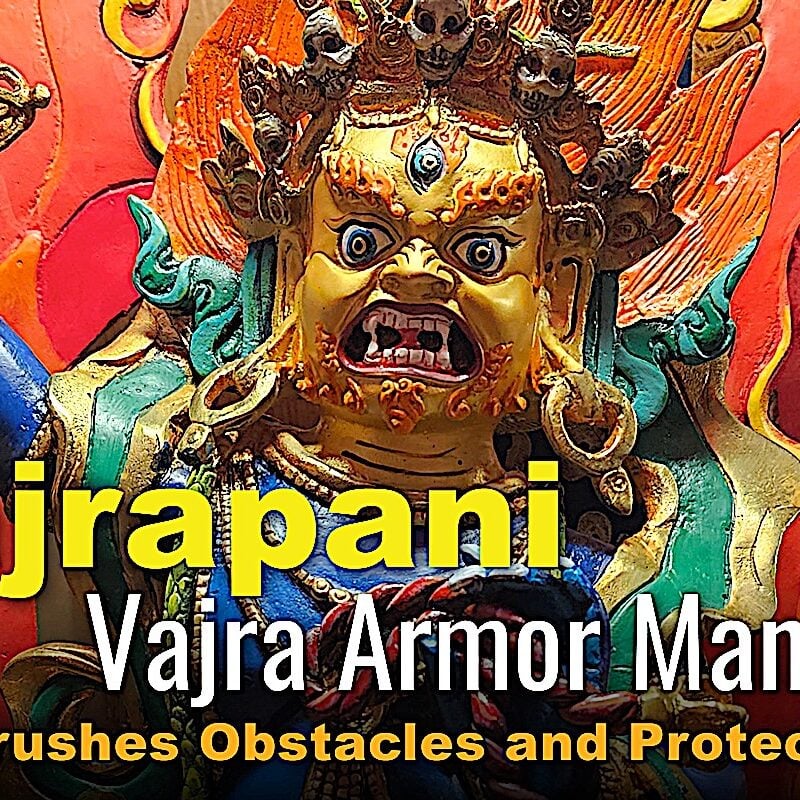
VIDEO: Vajrapani Vajra Armor Mantra: Supreme Protection of Dorje Godrab Vajrakavaca from Padmasambhava
Search
Latest Features
Please support the "Spread the Dharma" mission as one of our heroic Dharma Supporting Members, or with a one-time donation.
Please Help Support the “Spread the Dharma” Mission!

Be a part of the noble mission as a supporting member or a patron, or a volunteer contributor of content.
The power of Dharma to help sentient beings, in part, lies in ensuring access to Buddha’s precious Dharma — the mission of Buddha Weekly. We can’t do it without you!
A non-profit association since 2007, Buddha Weekly published many feature articles, videos, and, podcasts. Please consider supporting the mission to preserve and “Spread the Dharma." Your support as either a patron or a supporting member helps defray the high costs of producing quality Dharma content. Thank you! Learn more here, or become one of our super karma heroes on Patreon.
Lee Kane
Author | Buddha Weekly
Lee Kane is the editor of Buddha Weekly, since 2007. His main focuses as a writer are mindfulness techniques, meditation, Dharma and Sutra commentaries, Buddhist practices, international perspectives and traditions, Vajrayana, Mahayana, Zen. He also covers various events.
Lee also contributes as a writer to various other online magazines and blogs.




